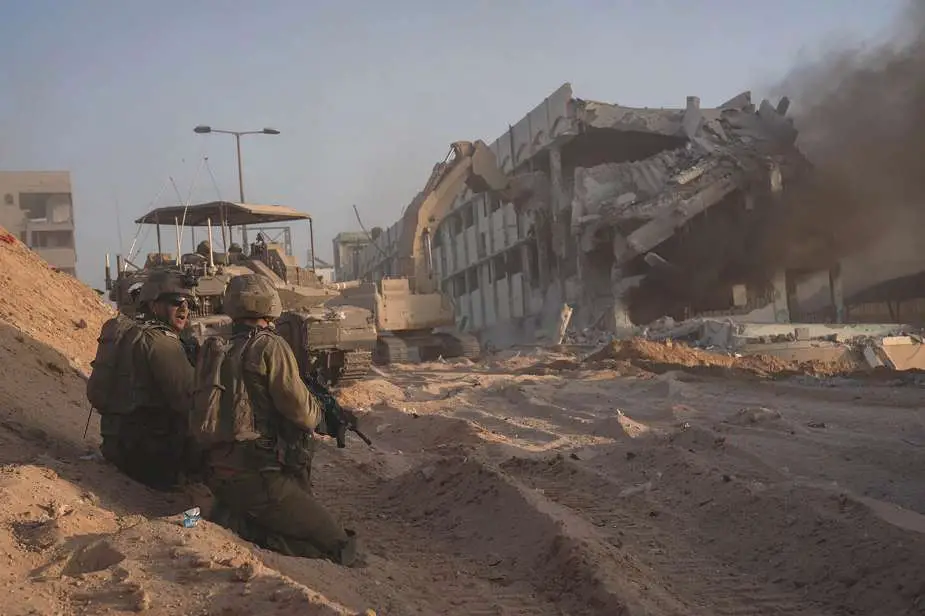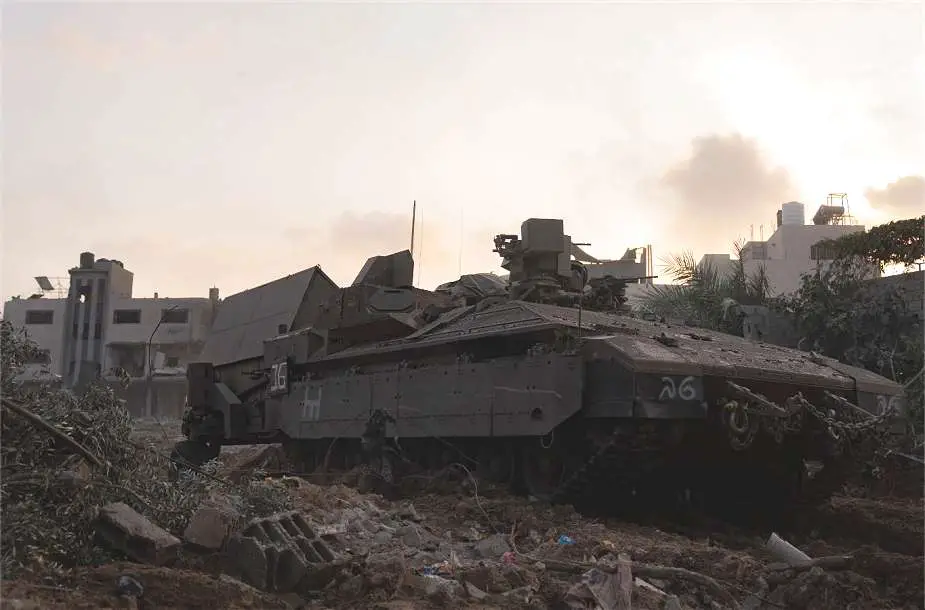Analysis: Complexity of Urban Warfare for Israeli Infantry and Tanks in the Gaza Strip
Alain Servaes, CEO of Army Recognition Group and former NCO (Non-Commissioned Officer) in a mechanized infantry battalion, explains the complexity of urban warfare for infantry units and tanks. Conducting military operations in urban environments, such as the Gaza Strip, as part of the army's ground operation, imposes significant operational constraints and exposes infantry units and tanks to a variety of threats that are less prevalent in open warfare.
Follow Army Recognition on Google News at this link

Israeli infantry maneuvering through the densely populated urban landscape of Gaza. (Picture source IDF)
The density of urban areas in the Gaza Strip is among the highest in the world. The Gaza Strip is a small region on the eastern coast of the Mediterranean Sea. It is bordered by Israel to the north and east, and Egypt to the south, with a short coastline to the west. The region is just about 41 kilometers (25 miles) long and 6 to 12 kilometers (3.7 to 7.5 miles) wide, covering an area of approximately 365 square kilometers (141 square miles).
Despite its small size, the Gaza Strip has a population of around 2 million Palestinians, according to estimates as of my last update in January 2022. This results in a very high population density, with thousands of people per square kilometer. The high density is exacerbated by the political situation, as the territory has been under a blockade imposed by Israel and Egypt since 2007, restricting the movement of people and goods.
In urban areas of the Gaza Strip, the density means that many people live in close quarters, often in high-rise buildings, crowded refugee camps, and densely packed neighborhoods. This has significant implications for infrastructure, public health, and urban planning. During conflicts, the high density can lead to higher casualty rates and more significant destruction of property due to the difficulty in avoiding civilian areas during military operations.
The dense and complex urban terrain of the Gaza Strip severely restricts the maneuverability of soldiers and armored vehicles. Infantry units find it challenging to move quickly and maintain formation amidst narrow streets and closely packed buildings. Tanks, which are powerful in open fields, struggle with the confines of urban spaces, where roads can be too narrow, and obstacles such as bridges and underpasses may not support their weight or size.
Communication is another critical constraint. The urban landscape is notorious for disrupting radio signals, which can lead to breakdowns in coordination and control. For infantry, this means increased vulnerability as units can become isolated. For tank crews, whose effectiveness relies on constant communication with infantry and command units, urban canyons created by tall buildings can lead to significant operational difficulties.
Logistics within an urban combat zone also become more complicated. The delivery of essential supplies such as ammunition, food, and medical equipment to infantry units is hindered by the urban layout. For tanks, the logistical challenges are even more daunting, as they require a steady supply of fuel, spare parts, and specialized ammunition, which are difficult to transport and distribute in a cityscape.
The rules of engagement in urban settings are often stringent to minimize collateral damage and civilian casualties. This imposes an additional constraint on both infantry and tanks, as they must exercise extreme caution in the use of force. The risk of collateral damage is high, and the political and strategic consequences of such incidents can be severe.

An Israeli armored vehicle run the challenging terrain of the Gaza Strip's urban environment. (Picture source IDF)
In terms of threats, urban environments favor defenders and can be a nightmare for attacking forces. Infantry units are particularly susceptible to ambushes and close-quarters engagements, where adversaries can strike from concealed positions and quickly retreat into the urban maze. Tanks, despite their armor, are vulnerable to attacks from above, where buildings provide high ground to the enemy, and at close range, where their main guns are less effective and where they can be targeted by handheld anti-tank weapons.
Adding to the complexity of urban warfare is the threat posed by tunnel networks, such as those used by Hamas militants. These tunnels can be used to facilitate surprise attacks, enable the movement of forces undetected, and store supplies or weaponry. They represent a significant challenge to conventional military operations, as they negate many of the technological advantages of modern armies and require specialized equipment and tactics to counter.
Close combat against anti-tank weapons in urban settings is particularly dangerous for armored units. The close proximity of buildings allows enemy forces to engage tanks from positions that are difficult to detect and target. Infantry supporting armored units must be vigilant and proactive in securing these areas to protect the tanks from such threats.
Overall, the urban battlefield is one of the most challenging environments for military operations, demanding a high level of coordination, discipline, and adaptability from both infantry and armored units. The presence of tunnel networks and the threat of close combat with anti-tank weapons further complicate the already daunting task of urban warfare.
Hamas Israel War 2023























